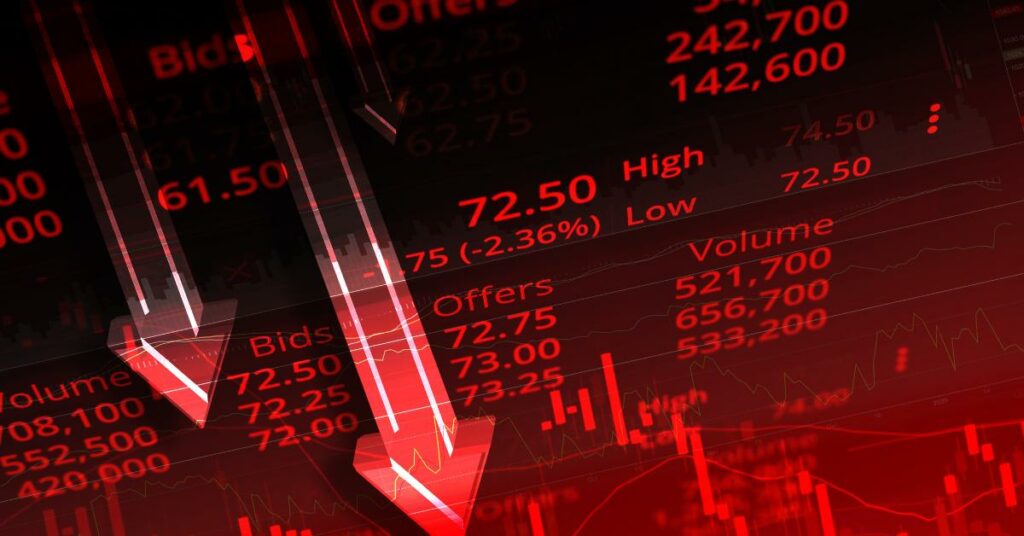Numerous Americans are increasingly questioning the Federal Reserve’s (the “Fed”) competence as a central bank, wondering if it is a fatally compromised regulator that primarily serves the interests of Wall Street’s largest banks at the expense of ordinary citizens and the U.S. economy. Many others have already reached their conclusions on this matter.
Persistent doubts about the Fed, which has an $8.8 trillion balance sheet backed by U.S. taxpayers, undermine confidence in the U.S. banking system, especially when the Fed continually moves from one bank bailout to another. (For context, the Fed’s balance sheet was $929 billion on December 26, 2007. Since then, it has grown by 847 percent over 15 years of consecutive bailouts.)
The evidence against the Fed has been mounting since the 2008 financial crisis, which marked the most severe economic downturn in the United States since the Great Depression of the 1930s.
To address the 2008 crisis, the Fed launched several emergency lending programs for Wall Street’s largest banks, in addition to its conventional discount window loans. Although the Fed disclosed general information about these programs, it withheld the names of the firms borrowing the majority of the funds and the amounts each institution borrowed.
The late Mark Pittman, a tenacious Bloomberg News investigative reporter, filed a Freedom of Information Act (FOIA) request for this information. The Fed stalled for six months, prompting Bloomberg LP to file a lawsuit in November 2008. Bloomberg won the suit, but the Fed appealed the decision. Numerous media outlets and groups supported the information’s release, and the Fed eventually lost at the Second Circuit as well. The Clearing House Association LLC, comprising some of the same Wall Street banks bailed out by the Fed, appealed to the Supreme Court, which declined to hear the case in March 2011.
The Dodd-Frank Act, signed into law by President Obama on July 21, 2010, forced the Fed to release transaction details of its seven emergency lending facilities in December 2010. The Fed eventually released the discount window transactions in March 2011, after the Supreme Court refused to hear the case.
The Dodd-Frank legislation, due to an amendment by Senator Bernie Sanders, mandated a Government Accountability Office (GAO) audit of the Fed’s emergency lending programs. The GAO’s July 2011 report disclosed that the Fed had provided over $16 trillion in cumulative loans at below-market interest rates to struggling banks (with Citigroup, Morgan Stanley, and Merrill Lynch receiving $5.7 trillion of the total).
The GAO report did not include the Fed’s discount window loans during the financial crisis, nor did it cover single-tranche term repurchase agreements conducted by the Federal Reserve Bank of New York (FRBNY) in 2008. The Levy Institute of Economics, considering all Fed lending programs and including the single-tranche repurchase agreements (ST OMO) and the Fed’s dollar swap lines, estimated a total of $29 trillion in emergency Fed loans.
Since the 2008 crisis, mainstream media’s commitment to holding the Fed accountable to the public has significantly deteriorated.
The lack of transparency and accountability during and after the 2008 crisis has led to increased public distrust in the Federal Reserve. The central bank’s close ties with Wall Street and its willingness to provide massive bailouts to major banks has raised concerns about the Fed’s role in the economy and the potential consequences of its actions.
In recent years, some have called for the implementation of more stringent regulations and oversight on the Fed’s operations, in order to ensure that its actions align with the best interests of the American public. These proposed measures range from requiring the Fed to provide more detailed information about its lending programs to subjecting its decisions to regular external audits.
Moreover, critics argue that the Fed’s massive expansion of its balance sheet since the 2008 crisis could lead to long-term issues such as inflation and financial instability. They contend that the Fed’s ultra-accommodative monetary policy has inflated asset prices and encouraged excessive risk-taking in financial markets, which may result in another financial crisis.
On the other hand, proponents of the Fed’s actions argue that its emergency lending programs and quantitative easing measures were necessary to stabilize financial markets and prevent a complete economic collapse during the 2008 crisis. They maintain that the Fed’s policies have been instrumental in promoting economic growth and reducing unemployment in the aftermath of the crisis.
In conclusion, the Federal Reserve’s role and actions during the 2008 financial crisis and beyond have been a subject of intense debate and scrutiny. The concerns over its accountability, transparency, and potential long-term consequences of its policies have led to calls for increased oversight and reform. It remains to be seen how the Fed will adapt to these demands and whether it will be able to restore public confidence in its ability to act as a competent central bank and regulator that serves the best interests of the American people and the U.S. economy.





